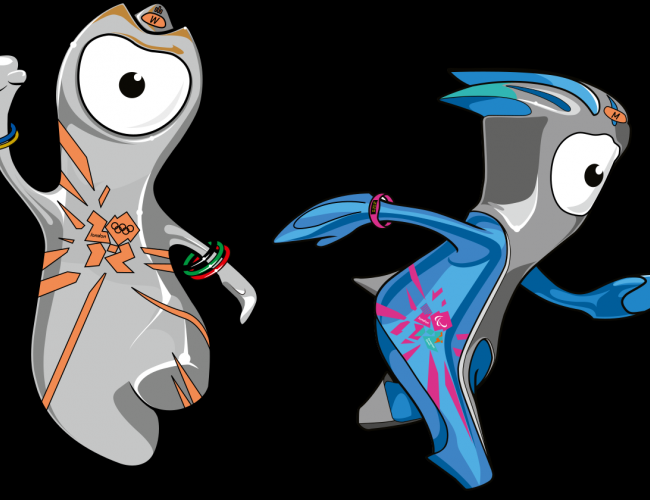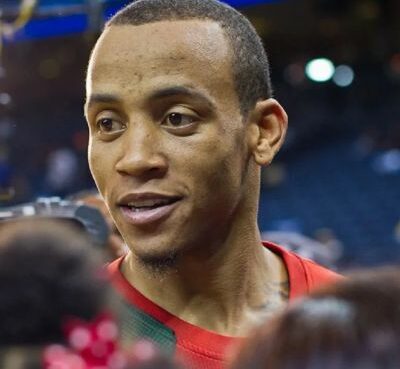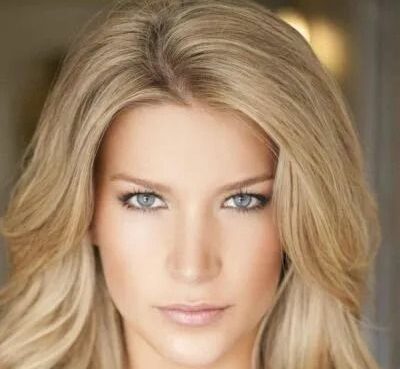Table of Contents
12 Best Olympic Mascots of all Time
Sports mascots have great appearances, as we are all aware. What the best Olympic mascots, though, do they look like? In today’s article, we have included some of the greatest Olympic mascots to ever enter the stadium.
Look it over carefully because you never know which of your favorite mascots may be there.
The Top 12 Olympic Mascots Ever
According to the Sports Show’s study, we developed this list.
We can’t promise that your favorite mascot will be towards the top of the list.
But we promise that none of the mascots listed below are less well-liked.
12 Best Olympic Mascots of all Time
| Rank | Name of Mascots | Olympics Year |
| 12 | Sam the Olympic Eagle | 1984 |
| 11 | Cobi | 1992 |
| 10 | Vinicius | 2016 |
| 9 | Izzy | 1996 |
| 8 | Soohoorang | 2018 |
| 7 | Sukki, Nokki, Lekki, and Tsukki | 1998 |
| 6 | Powder, Copper, and Coal | 2002 |
| 5 | Neve and Glitz | 2006 |
| 4 | Fuwa | 2008 |
| 3 | Miga, Quatchi, Sumi, and Mukmuk | 2010 |
| 2 | The Leopard, Polar bear, and Hare | 2014 |
| 1 | Wenlock and Mandeville | 2012 |
12. Olympic eagle Sam
Sam, the Olympic Eagle, served as the official mascot for the Los Angeles Summer Olympics and Paralympics in 1984. The national bird of the United States, the bald eagle, is symbolized by Sab.
Sam, the name of the mascot, is a play on another national symbol, Uncle Sam.
Sam was created by the talented Disney animator Bob Moore.

The 1984 Summer Olympics’ mascot was Sam the Eagle, a puppet from The Muppet Show.
These two do not, however, agree when it comes to design.
Sam the eagle, in a similar vein, wasn’t just utilized at the Olympics.
Later, the Mt. SAC Relays, a track, and field competition at Mount San Antonio College employed this mascot to promote the event.
11. Cobi
Cobi represented Barcelona, Spain as the official mascot of the 1992 Summer Olympic and Paralympic Games.
Not to mention, Cobi was the most popular Olympic mascot that year among fans.
Moreover, this mascot was based on Velázquez’s timeless Las Meninas.
Did you also know that Cobi was a Catalan Sheepdog painted in the Cubist style?
The COOB, or Barcelona’s Olympic Organizing Committee, is responsible for the mascot’s name.
Even though the mascot was widely known before the 1992 Summer Olympics, it managed to maintain its enthusiasm very successfully.
A TV show based on Cobi called the Cobi Troupe was also important to remember.
Canada tops the list of nations sending the most LGBTQ+ athletes to the Olympics. Different nations are included in the mix, though.
10. Vinicius
The official mascot of the 2016 Summer Olympics, which was held in Rio de Janeiro, Brazil, was Vinicius.
This distinctive mascot was created by So Paulo based on the animation studio Birdo.
The creator of this mascot used characteristics like cats, monkeys, and birds that represented Brazilian wildlife when creating it.
Additionally, only Brazilian businesses were permitted to submit bids for the development of this mascot.
To choose the final design in August 2013, a panel of judges that included media professionals and representatives from several Olympic organizations was assembled.
After a lengthy selection procedure, the mascot was ultimately shown to the public on November 23, 2014.
After three weeks of online voting, Vinicius de Moraes was chosen as the mascot’s name.
9. Izzy
One of the best Olympic mascots in the world is Izzy Izzy, the cute little fan favorite mascot of the 1996 Summer Olympics and Paralympics.
Izzy was an animated character who could change into a variety of shapes. If you didn’t know, Whatzit, which is short for “What is it?” was her first name.
Surprisingly, the mascot does not feature any kind of creature or individual. John Ryan, a senior animation director at the Atlanta-based design company DESIGNefx, created Izzy.
Out of twenty competing design businesses, the best design was selected to create a magnificent summer Olympics mascot.
As a result, the mascot gained such much popularity that a roller coaster in Williamsburg, Virginia’s Busch Gardens Williamsburg theme park was named after it.
8. Soohoorang
One of the top Olympic mascots around the globe is Soohorang, who will represent the 2018 Winter Olympics. Additionally, this incredible mascot was created and developed in Korea.
In terms of the name’s connotation, “Sooho,” which is Korean for “protection,” represents the safety offered to competitors, participants, and spectators.
It also stands for maintaining world peace.
Additionally, the name “Rang” is derived from the Korean term “Ho-rang-i,” which means “tiger.”
In addition, “Jeongseon Arirang,” a well-known traditional Korean folk song, ends with this letter.
About Soohorang, its mascot was modeled on the white tiger or “back” in Korean.
In Korea, it is regarded as a sacred guardian animal.
Should you be interested in the history of Greek Olympic sports?
Then read on to learn about the top 12 Olympic sports from ancient Greece!
7. The terms Sukki, Nokki, Lekki, and Tsukki
The “Snow lets,” often referred to as Sukki, Nokki, Lekki, and Tsukki, served as the official mascots of the Nagano Winter Olympics and Paralympics in 1998.
The four mascots also stand for four years between each Olympiad.
Sukki represents the element fire, Nokki represents the element air, Lekki represents the element earth, and Tsukki represents the element water.
The four endearing Snow lets also stand in for Japan’s four main islands.
They are deserving of being listed among the top Olympic mascots due to how adorable they are and what they stand for.
Additionally, the word “Snow lets” is composed of two words:
“snow,” which refers to the Winter Olympics, and “lets,” which means “to invite.”
6. Coal, Powder, and Copper
The official mascots of the Salt Lake City Winter Olympics and Paralympics in 2002 were Powder, Copper, and Coal.
The International Olympic Committee gave its approval to the mascots in December 1998 after they were initially created in September 1997.
Powder, Copper, and Coal are one of the cutest mascots and deserving of a spot among the top Olympic mascots.
Additionally, Steve Small, the man behind these mascots, is well renowned for his work on the animated series Hercules and Rugrats.
However, the Salt Lake Organizing Committee had to work with Landor Associates and Publicis from San Francisco to design and market the mascot.
The three mascots were unveiled by the authorities at the Triad Center in downtown Salt Lake City on May 15, 1999.
5. Neve and Glitz
Neve and Glitz are our fifth entry for the day at this time.
They were the official mascots of the 2006 Winter Olympics and Paralympics in Turin, Italy, and were regarded as one of the best Olympic mascots.
Let’s not forget that on May 20, 2003, the TOROC Organizing Committee received 237 mascot design submissions for the Olympics.
First, the authorities selected five finalists from the 237 designs.
Out of Pedro Albuquerque’s last five creations, only “Neve and Glitz” was kept.
Neve, who is a humanized female snowball and wears a crimson suit to symbolize “softness, gentleness, and elegance” in Italian, is similar.
In contrast, Glitz is a blue-clad humanized male ice cube who stands for “Ice” in Italian and symbolizes “enthusiasm and joy.”
4. Fuwa
The 2008 Summer Olympics and Paralympics were held in Beijing, China, and the official mascot was Fuwa Fuwa, which is Chinese for “good-luck dolls.” Most notably, this wonderful mascot doll was created by renowned Chinese designer Han Meilin.
Fuwa was chosen as the official mascot on November 11, 2005, earning a place among the top Olympic mascots of all time. Fuwa was unveiled at a National Society of Chinese Classic Literature Studies event, and he later turned into the national mascot of China.
Plus, the five Fuwa named after the phrase “Beijing Huan Ying ni” are Beibei, Jingjing, Huanhuan, Yingying, and Nini. It states, “Beijing cordially welcomes you.”
The Fuwa journeyed all around the world as peace ambassadors, stopping at all seven continents. The mascot was greeted by a famous person while it was there.
View the Fuwa Olympic Roaming Mind article!
3. Mukmuk, Miga, Quatchi, and Sumi
The official mascots of the 2010 Winter Olympics and Paralympics in Vancouver, Canada, were Miga, Quatchi, Sumi, and Mukmuk.
The design was produced by the Canadian-American company Meomi Design.
But even though they were generated a little earlier, the Canadian government only made them available to the public on November 27, 2007.
Additionally, on the day of the Olympics and Paralympics, the public first encountered these mascots.
Additionally, these selections were made from 177 designs that were submitted from throughout the world.
The mascots were selected by the VANOC, the Olympic organizing committee.
2. The Hare, Leopard, and Polar Bear
The 2014 Winter Olympics and Paralympics were hosted in Sochi, Russia, and their official mascots were the Leopard, Polar Bear, and Hare.
To find the greatest mascot for the 2014 Olympics, Russia held a national mascot design competition from September 1 to September 5, 2010.
As a result, the judges received at least 24,000 design submissions.
On February 7, 2011, a variety of designs were displayed on Russia’s national television network.
From that selection, the authorities also picked about 10 Olympic and 3 Paralympic designs.
The Leopard, Polar Bear, and Hare were the three mascots that the Russian populace chose as their favorites.
As a result, they were chosen as the 2014 Winter Olympics and Paralympics’ final mascots.
1. Wenlock and Mandeville
Wenlock and Mandeville are our best Olympic mascots to have ever walked the Olympic arena, which brings us to number one on the list.
In addition, these fantastical characters served as the official mascots of the London, United Kingdom, 2012 Summer Olympics, and Paralympics.

The public first saw these mascots, nonetheless, two years before the Olympics.
Similarly, Wenlock and Mandeville, the team’s mascot, was created by London-based creative agency Iris.
The Wenlock Olympian Society organized the inaugural Olympic Games in 1850 in Wenlock, Shropshire, England. This is where the name “Wenlock” for the mascot came from.
Also Read: Amanda Leighton, Kin Shriner, Michael Bivins
Conclusion
We are all aware of the importance of and involvement of these mascots in the Olympics.
Not to mention how much the host nation yields when selecting the ideal mascot for the momentous occasion.
Each mascot excelled differently. Which of the best Olympic mascots we’ve listed here was your favorite?




